
Boss 429-powered Ford Torino
Story and Photos by Joe Greeves
Automotive addictions can begin at a very early age. Just ask John Jinnings. He smiles when he recalls that he’s been a car buff since about age 4. As a hardcore Ford guy for the last 30 years, he has owned more than 130 cars, and put himself through college by buying, fixing and reselling cars to pay for tuition. Each one got a little better, but this 1970 Ford Torino GT fastback is the high-water mark for him. It’s his 20th custom car build in the last 20 years, and it boasts some extraordinary additions under the skin.
“The ante gets higher each time, and we try to up it a little bit with every new vehicle,” John tells us. “For me, attention to detail is the biggest thing. Some of the stuff that’s available today versus what we had to work with 10 years ago — it’s just amazing.”
For instance, previously he would spend weeks trying to find a series of pulleys that would line up to run air, power steering, power brakes and alternator. Now with companies like Billet Specialties, it’s just a phone call away. While some things may have gotten easier, a build of this quality still takes considerable time.
The impetus for this project began when Jon Kaase Racing Engines came out with the Boss 429 recreation, called the Boss Nine. It fit perfectly into an idea that John had been mulling over for some time. Ford had put the Boss 429 in the ’69 to ’70 Mustangs (and two special Cougars) for NASCAR homologation, but what would it be like if they put it in the Torino? Determined to find out, John turned to the internet and began the search for a suitable project car. He eventually tracked down a 1970 Ford Torino GT fastback in Saginaw, Michigan.
It had been a race car and a showpiece for 17 years, but it then languished in a warehouse for some time. Amazingly, when he got the car home, it was virtually rust-free. The next step was simple. He contacted Kaase, bought the makings of a motor and started the project.
Knowing the horsepower potential of this engine, John’s first step was to establish a strong foundation for the car. That began with a call to Martz Chassis in Bedford, Pennsylvania, who had just released a coilover four-link suspension for Fairlanes and Comets.
John called, saying he wanted to do a Torino, and Martz jumped at the opportunity to prototype one. About nine months later, John had the first unit. The QA1 coilover front end uses a control arm on the bottom with a tubular A-arm on top. The setup is fully adjustable for caster and camber and opened up lots of room for the new motor. Subframe connectors tied the front and rear together, followed by a four-link/coilover setup in the rear with a Panhard bar. “I can put a jack under any corner and lift three wheels off the ground — the chassis is that stiff,” John boasts.
The engine is actually a Jon Kaase Boss Nine 460, bumped to 572 cubes, with 9.8:1 compression ratio and a mild cam. It’s designed around an A460 block and equipped with Diamond pistons, Oliver rods, Bryant Racing crank and special COMP hydraulic roller cam. The Kaase heads and intake are fed by a Pro Systems single-venturi, SV1 carburetor, flowing 1,400 cfm. Programmed from the factory, it ran a 14:1 air-fuel ratio right out of the box. When it was tested on Kasse’s dyno using race headers and C16 fuel, the motor produced a whopping 850 hp at 6,300 rpm redline.
When John received the engine, he chose a set of 2.25-inch Ford Powertrain Applications headers, flowing into a 3-inch dump with electric cutouts. The full-length exhaust system consists of 2.5-inch pipe with dual Flowmaster 50 Series mufflers that barely contain the roar of the big V8.
Ken Felice and the experts at Felice Performance Engines in Ionia, Michigan, handled the assembly of all the components. Handling gearshifts is a Lentech AOD four-speed transmission, rated at 1,500 hp and 1,000 lb-ft of torque. It has a 2,800 rpm stall converter, making it quite pleasant on the street. The 9-inch Ford rear axle is fitted with 3.50 gears and Moser axles. The car rolls on Budnik Spark wheels, measuring 18 x 9.5 with 4.75-inch backspacing, and wrapped in Nitto NT555 tires.
Paint and bodywork were accomplished at Evers Collision Works, in Fort Wayne, Indiana. During the full rotisserie restoration, the bottom of the car was painted NASCAR gray, with the frame, suspension parts and rear housing finished in black for contrast.
Body modifications to the vintage fastback began with a thorough powder coating of the stainless steel trim around the windows and the drip rail moldings in Ford Tuxedo Black. Front and rear bumpers are fiberglass from Auto Krafters and were refitted tightly to the body. A NOS Cobra grille, complete with quad headlights and single chrome bar, replaces the original. Terry Delong created the tall Boss 429-style hood scoop, adding an aggressive look, as well as providing a functional blast of ram air. BASF gloss black and multiple coats of clear cover the entire car with satin black inserts on the hood and rear panel.
The only graphic on the car is the airbrushed skull wearing a cowboy hat and holding a full house, done by Gary Morgan. It came to be because every time John got on eBay, he would somehow find another perfect addition to the car. Soon, John’s wife, Linda, named the car All In, and when she found the skull T-shirt in Las Vegas, it established the theme for the Torino.
Mike Ball created the fiberglass center console that holds the switches for the overdrive transmission, cutouts and B&M shifter. Utilizing every inch in order to keep mechanicals hidden, the space between the back seat and the fold-down panel in the trunk became the perfect spot for the car’s electronics. The compartment holds the dual batteries, stereo components and master kill switch.
Now that it’s complete, John looks back and realizes the fun is in the building process. He usually keeps his cars a few years and moves on to something new, but he smiles when he says, “This one might stay awhile.”

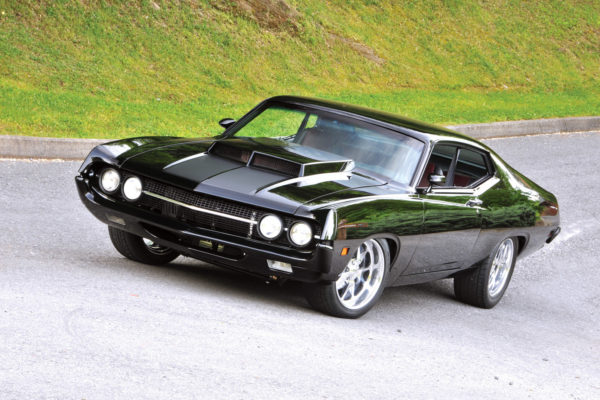
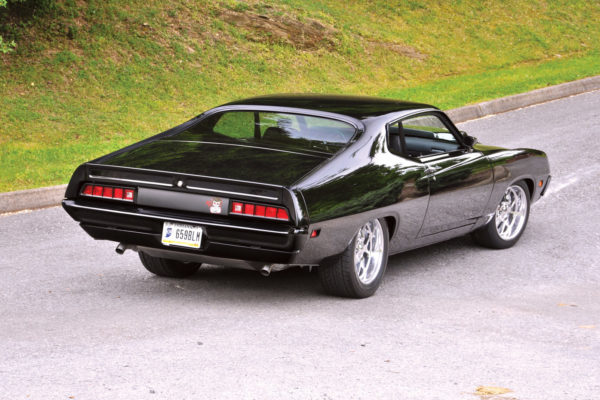
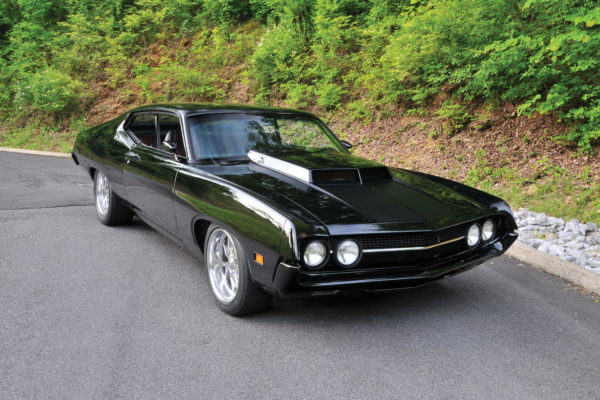
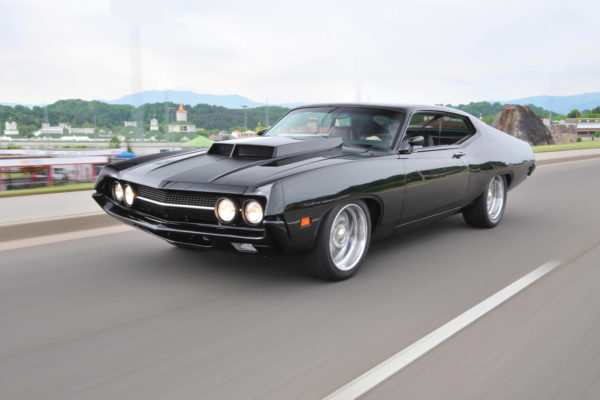
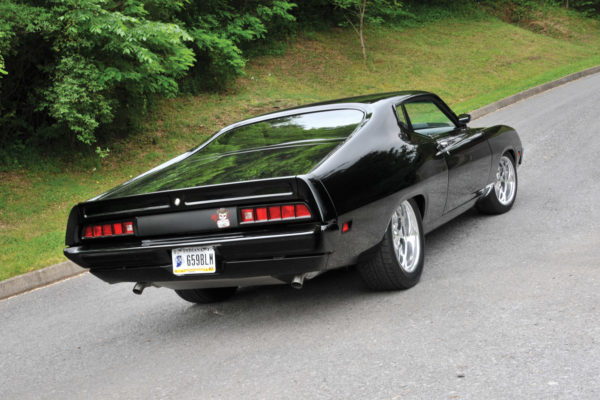
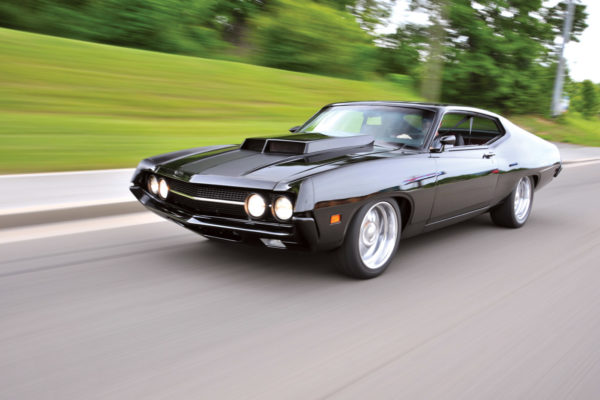
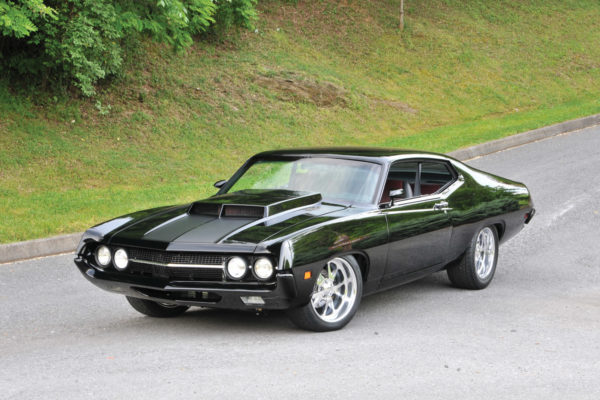
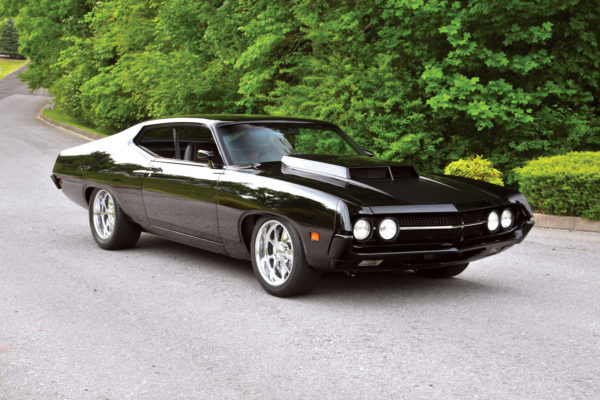
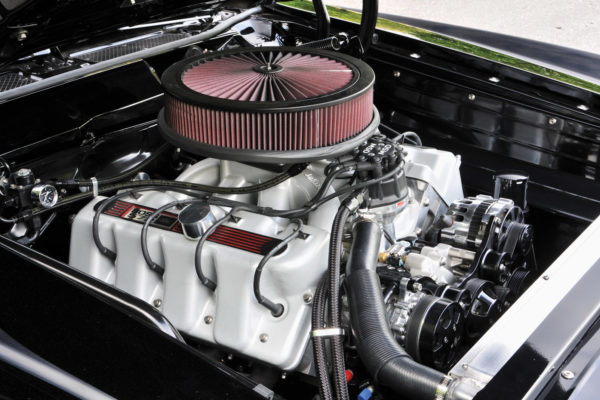
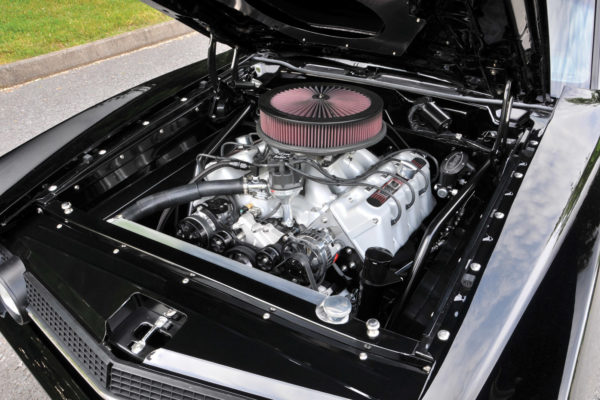
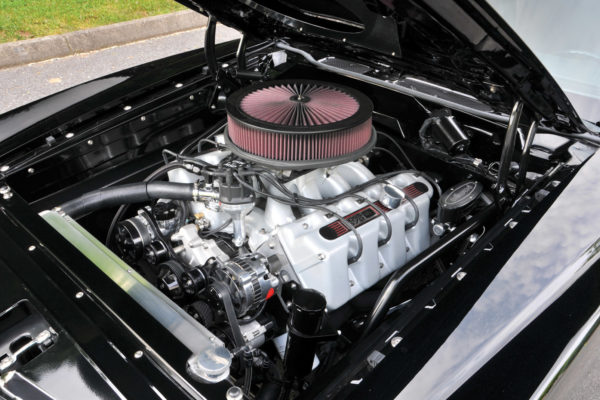
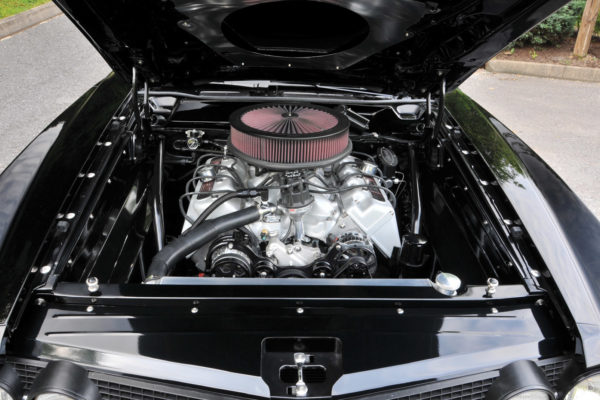
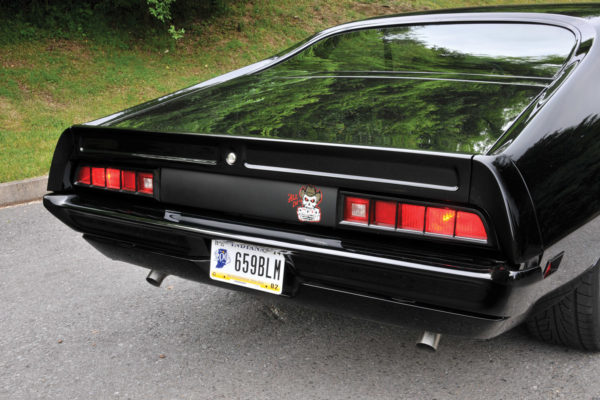
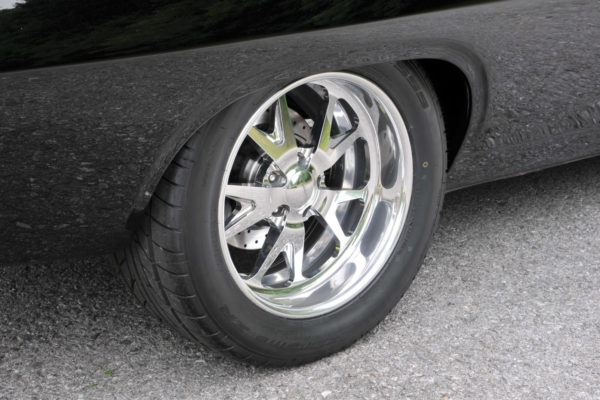
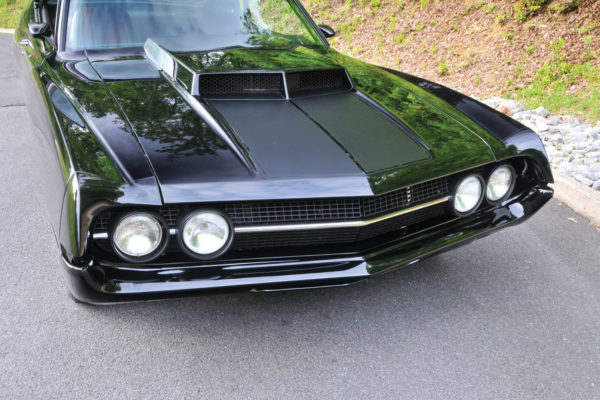
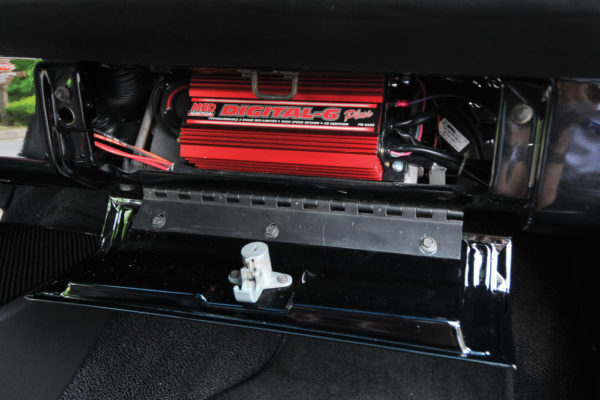
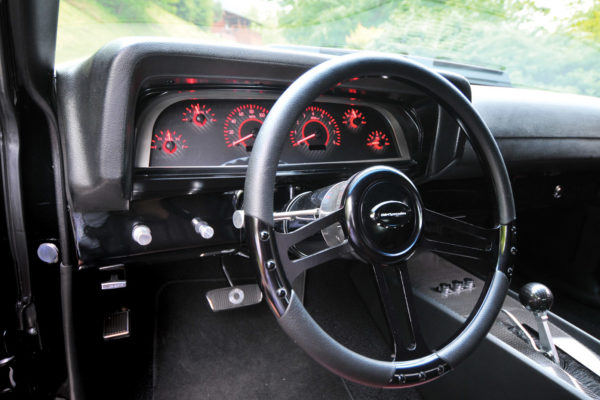
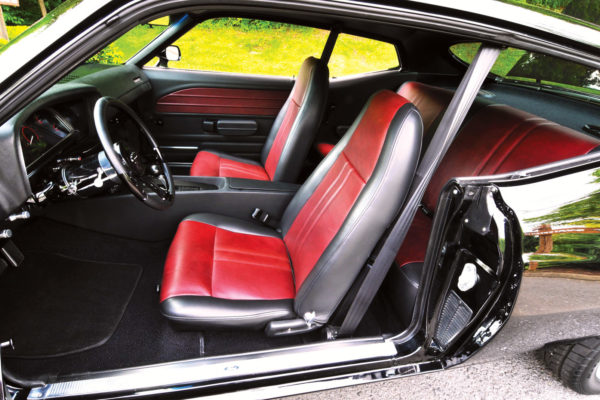
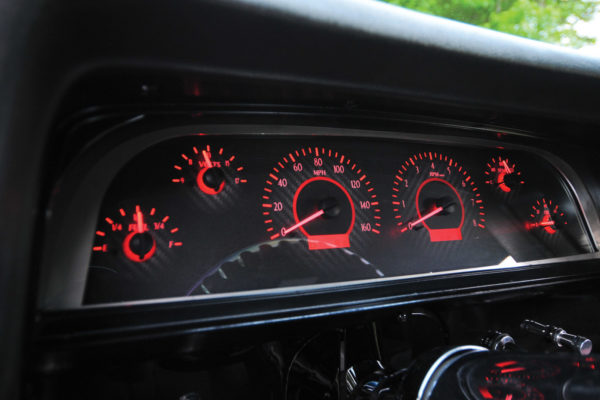
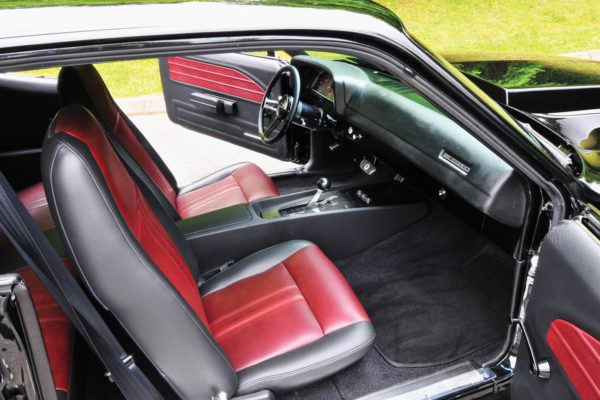
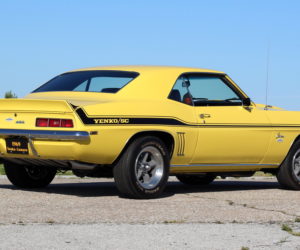
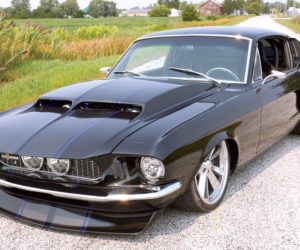
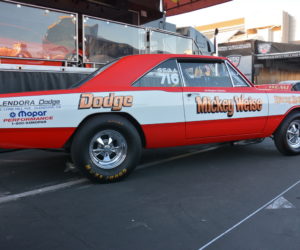
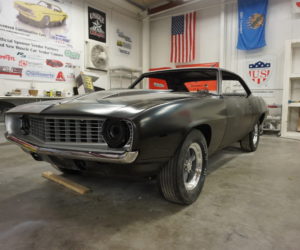
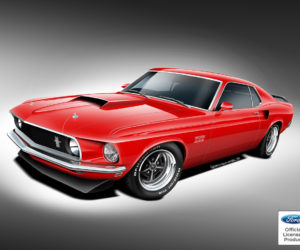
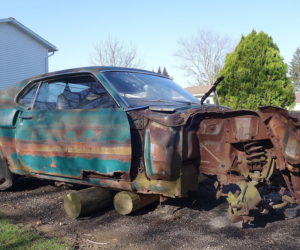




Comments for: The Keeper
comments powered by Disqus